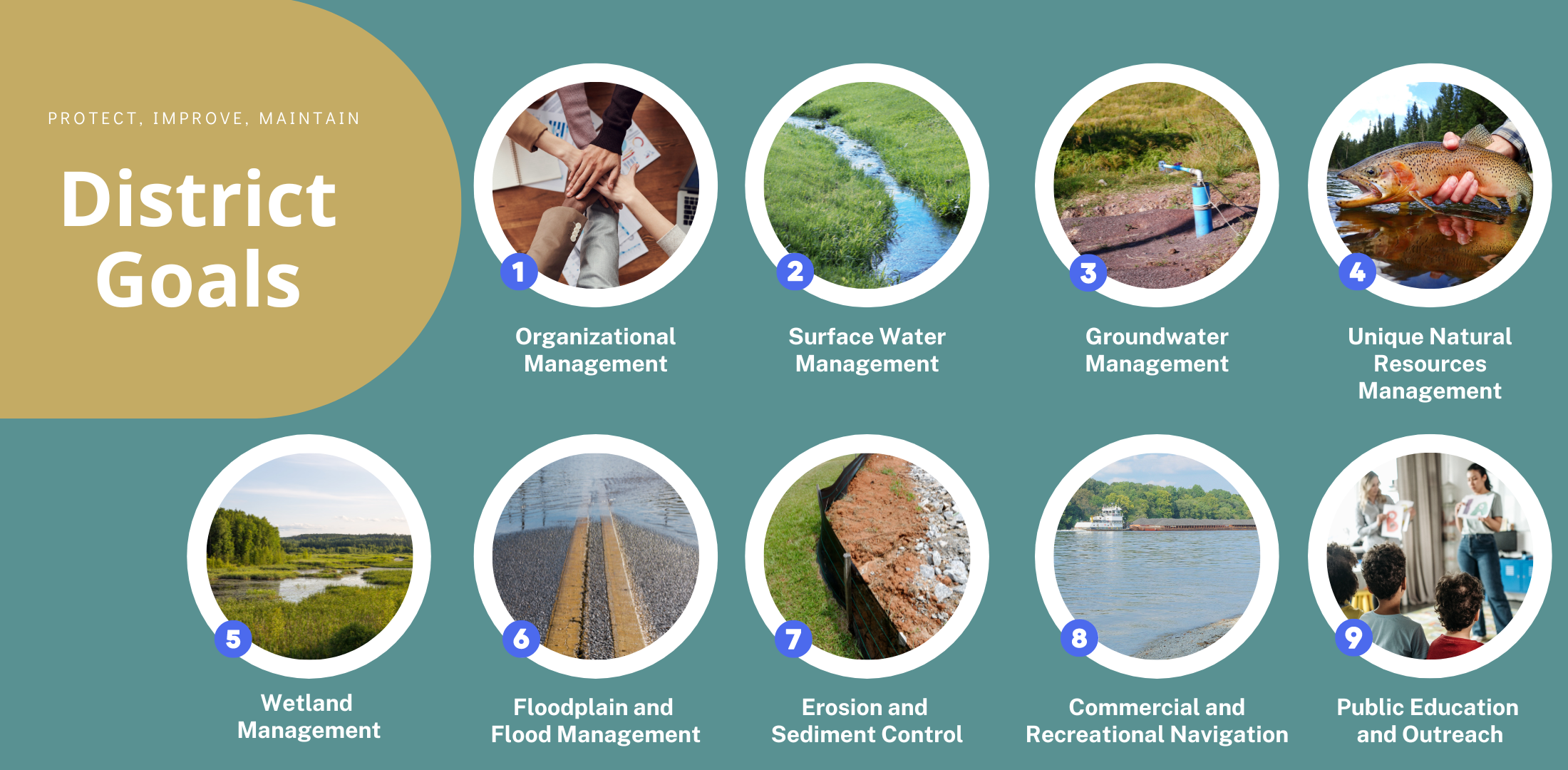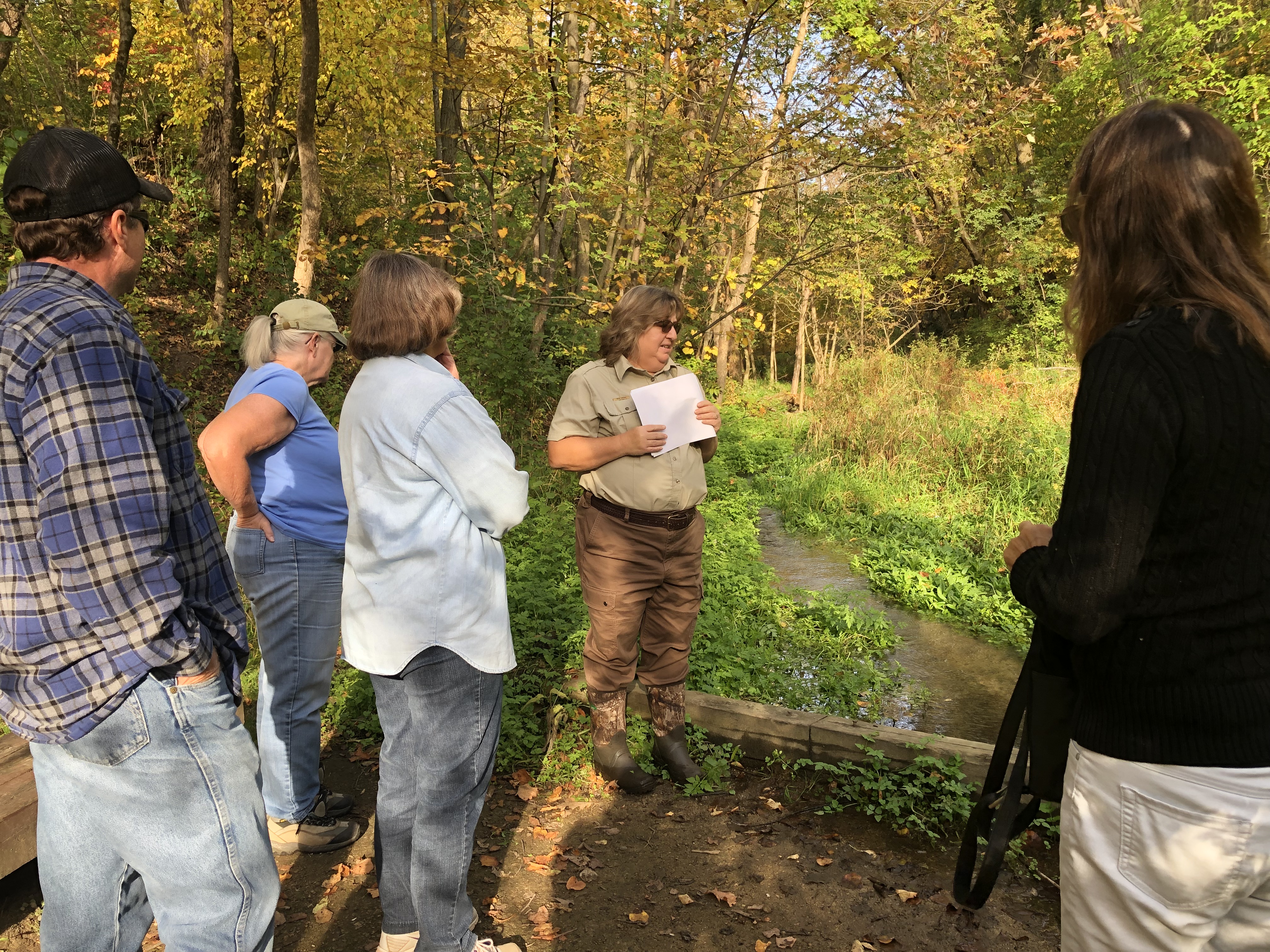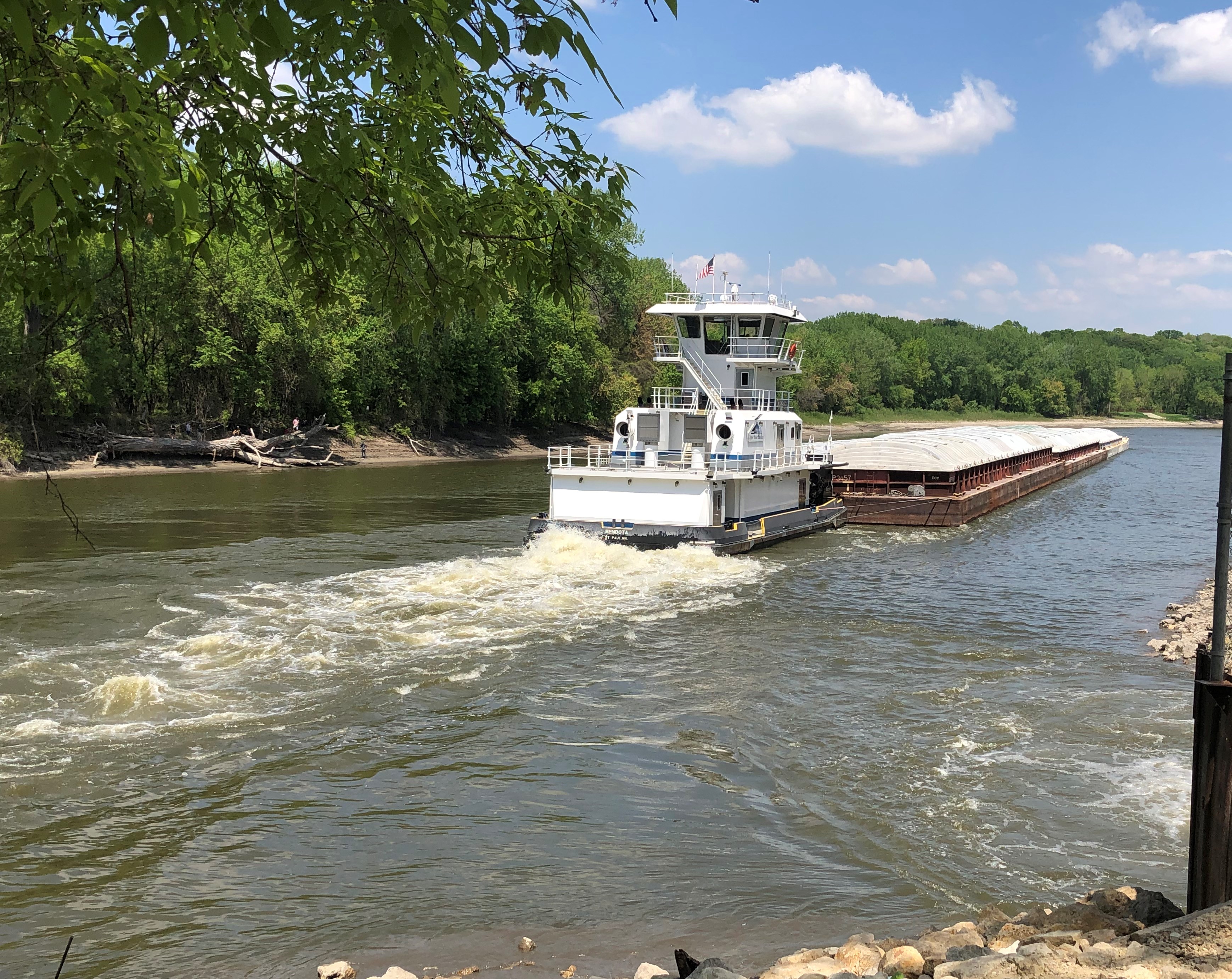
The District works toward a number of goals identified in the Watershed Management Plan. A summary of goals is listed below; learn more about each goal within the Plan.
Goal 1: Organizational Management
- Cooperate with other governmental agencies on issues affecting the District's resources.
- Provide public information services.
- Perform periodic assessments and program reviews.
Goal 2: Surface Water Management
- Provide strategic resource evaluation and management.
- Develop a High Value Resources Area overlay district.
- Create watershed management standards.
- Promote disconnected stormwater management and low-impact development.
- Develop a cost-share incentive program.
- Lead water quality restoration programs.
- Modify and continue the monitoring program.
- Complete detailed data assessments.
- Coordinate with other agencies and water quality programs.
- Develop steep slopes standard.
- Develop a vegetation management standard/plan.
Goal 3: Groundwater Management
- Provide strategic resource evaluation and management.
- Modify and continue the monitoring program.
- Support wellhead protection efforts.
- Develop infiltration standard.
- Promote conservation and wise use of groundwater.
- Monitor groundwater.
- Perform regional modeling.
Goal 4: Unique Natural Resources Management
- Provide strategic resource evaluation and management.
- Modify and continue the monitoring program.
- Acquire and manage data.
- Provide technical assistance.
- Provide educational opportunities.
- Develop a mechanism for identifying and acquiring high value conservation easements.
- Encourage wildlife connectivity projects that achieve multiple goals, such as water quality improvements and fen and steep slopes protection.
- Develop a vegetation management standard/plan.
Goal 5: Wetland Management
- Provide strategic resource evaluation/management.
- Develop a mechanism for identifying and acquiring high value conservation easements.
- Delegate Wetland Conservation Act (WCA) to LGUs.
- Require LGUs to conduct wetland inventories and complete wetland management plans.
- Review WCA notices as received.
- Develop a wetland standard.
- Develop a vegetation management standard/plan.
Goal 6: Floodplain and Flood Management
- Develop floodplain and drainage alteration standard.
- Develop infiltration and peak flow standards.
- Manage localized flooding.
- Adopt infiltration and peak flow standards.
Goal 7: Erosion and Sediment Control
- Develop watershed management standards.
- Develop steep slopes standard.
- Support the National Pollutant Discharge Elimination System (NPDES) general permit.
- Develop erosion and sediment control standard.
- Develop a vegetation management standard/plan.
- Provide streambank and mainstem erosion assessment.
- Continue gully erosion repair.
- Promote and encourage shoreland protection.
- Develop a shoreline and streambank standard.
Goal 8: Commercial and Recreational Navigation
- Promote safety education.
- Manage existing Cargill East River (MN – 14.2 RMP) dredge material site.
- Create a beneficial use plan for dredge materials.
- Develop a funding structure to ensure proper maintenance and improvement along the river.
Goal 9: Public Education and Outreach
- Provide public information services.
- Provide educational opportunities.
- Promote safety education.
- Maintain Citizen Advisory Committee (CAC).
- Develop an outreach program.
- Engage volunteers.
- Provide opportunity for public input.
- Produce scientific studies and work products.
- Promote a variety of education programs.
- Use multiple outlets to distribute information.
Each year, the District reports progress on goals in the Annual Report.

